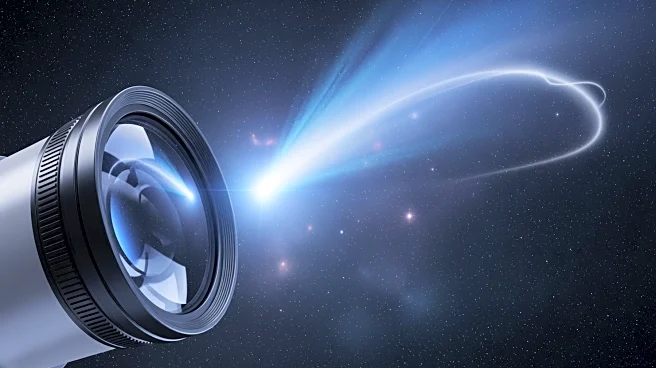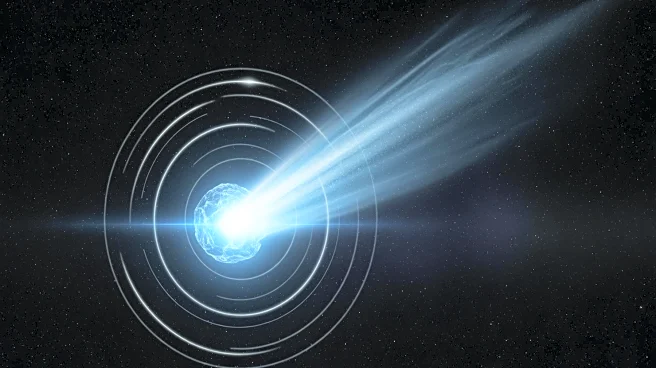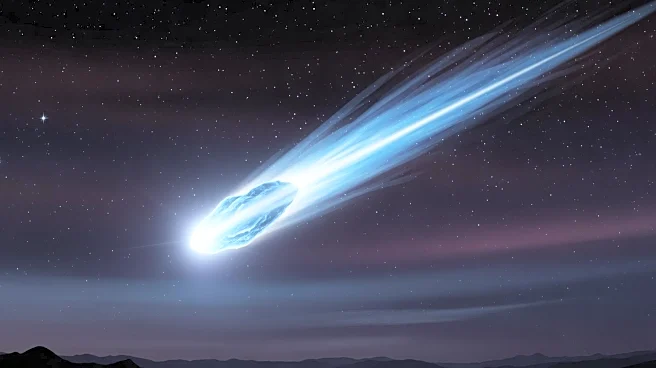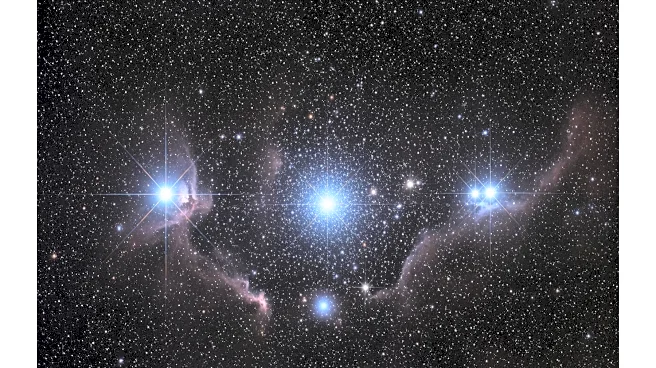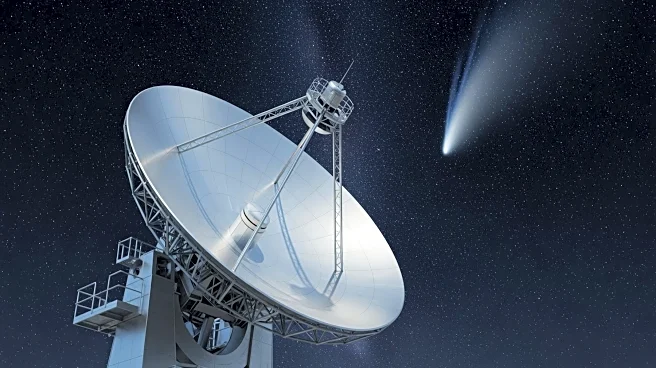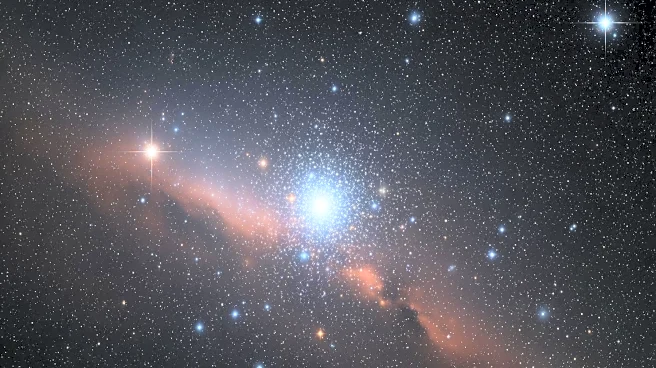What's Happening?
The Hubble Space Telescope has captured images of the interstellar comet 3I/ATLAS, revealing an unusual anti-tail extending towards the Sun. This comet, discovered in July 2025, is the third known interstellar object
after 1I/ʻOumuamua and 2I/Borisov. The comet's trajectory is hyperbolic, indicating it is just passing through the solar system and will not return. Recent observations have shown the comet's ion tail growing longer and more structured, with multiple jets visible. The European Space Agency has improved predictions of the comet's position using the ExoMars Trace Gas Orbiter, enhancing the accuracy of its path. Additionally, the MeerKAT radio telescope has detected radio emissions from hydroxyl radicals in the comet's coma, confirming its natural cometary activity.
Why It's Important?
The study of 3I/ATLAS provides valuable insights into interstellar objects and their behavior. Understanding the composition and activity of such comets can help refine models of cometary physics and the conditions in other star systems. The comet's unusual chemistry, rich in carbon dioxide and nickel, suggests it formed in extremely cold conditions far from its parent star. This research contributes to planetary defense strategies by improving orbit predictions, which are crucial for tracking potentially hazardous objects. The findings also dispel speculation about the comet's artificial origin, reinforcing its status as a natural celestial body.
What's Next?
Upcoming observations from the James Webb Space Telescope in December will further probe the comet's composition as it moves away from the Sun. The release of HiRISE images from the Mars Reconnaissance Orbiter is anticipated soon, offering a unique view of the comet's jets and anti-tail. Ground-based telescopes and amateur astronomers will continue to track 3I/ATLAS into spring 2026, maximizing data collection before it fades from view. These efforts will enhance our understanding of interstellar comets and inform future mission concepts for studying such objects.
Beyond the Headlines
The comet's behavior and composition challenge existing theories about interstellar objects, suggesting that such comets may be more common than previously thought. The presence of warm dust in early galaxies, as observed in 3I/ATLAS, indicates that star formation rates in the early universe may have been higher than current models predict. This research highlights the importance of direct observations in the submillimeter regime to uncover the cosmic buildup of stellar mass.
